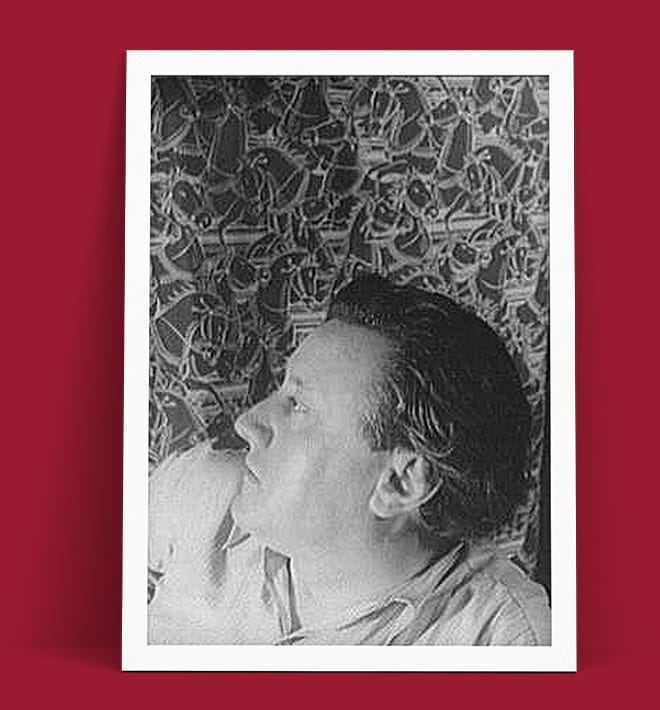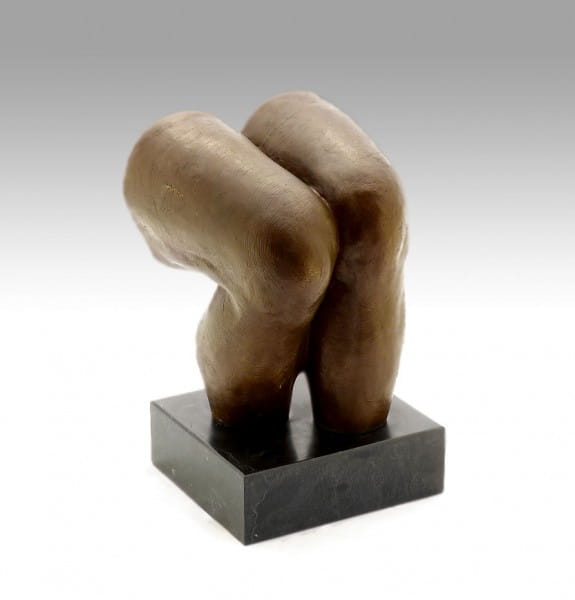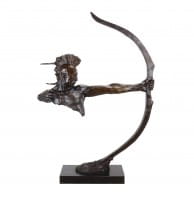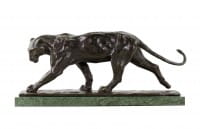Prices incl. VAT, free shipping worldwide
Ready to ship today,
Delivery time appr. 3-6 workdays










Product description
"Gaston Lachaise - Bronze Torso of two Legs - Signed"
| Weight | 14,3 kg |
A Study in Strength Without Ornament - Torso of Two Legs – Signed Gaston Lachaise
In this bronze sculpture, we are presented with a deeply sensual but profoundly minimalist interpretation of the lower torso. The legs are sculpted not in motion, nor bound by anatomical fidelity, but in quiet, almost reverent stillness. The softness of the volume, the deliberate fullness of the curves, the absence of upper body or gesture—all invite us to focus not on expression, but on mass, on flesh, on physicality as icon. In the broader context of Gaston Lachaise Sculptures, this work can be read as a sculptural haiku—dense with meaning, reduced in form, unapologetically corporeal.
Where Form and Essence Intersect
Born on March 19, 1882, in Paris, Gaston Lachaise grew up in the shadow of Europe’s most rigorous sculptural traditions. Trained at the École des Beaux-Arts, Lachaise could have followed a classical trajectory. But his decision to emigrate to the United States in 1906 changed the direction of his life and the history of sculpture itself. As a revolutionary Gaston Lachaise Artist, he would soon create a new language of volume and balance, centering around the human body not as an academic exercise, but as a living and metaphysical force. This Torso of Two Legs bronze, an abstraction of the lower body reduced to pure rhythm and flesh, is an echo of Lachaise’s central belief—that even the smallest human fragment can carry the full weight of presence.
From Muse to Metaphor
Like so many of his full-bodied works, this sculpture likely draws inspiration from Lachaise’s greatest muse—his wife and lifelong love, Isabel Dutaud Nagle. She was not only his subject but the very wellspring of his vision. Through her, he perceived femininity not as passive or decorative but as elemental and immortal. While the body here is incomplete, it is far from diminished. In this Gaston Lachaise Bronze, we see how even the lower torso becomes monumental—a sacred architecture of weight and intimacy, a living memory cast in metal.
A Fragment That Refuses Fragility
Unlike many modernist sculptors who turned to fragmentation to express absence, trauma, or ruin, Gaston Lachaise Artist used the partial figure to concentrate meaning. The absence of a head or torso does not suggest loss but heightens the intensity of what remains. The legs here, thick and rounded, evoke not fragility but permanence. They are rooted like the base of a mythic tree or the legs of a deity. In the context of works like Gaston Lachaise Floating Woman or Standing Woman, this sculptural fragment feels like a distillation—the pure core from which Lachaise’s entire vision radiates.
A Language of Curves and Solidity
The organic flow of this sculpture is unmistakably Lachaise. There are no hard lines, no edges to break the gaze. Everything is continuity and curvature, each volume transitioning seamlessly into the next. This treatment of form embodies the central philosophy of Gaston Lachaise Sculptures: the exaltation of the physical as eternal. His works never diminish the human body into abstraction for its own sake—instead, he redefines abstraction through the deeply human. Here, the legs speak with the same resonance as a full figure. They hold not just mass, but memory. Not just structure, but soul.
Gaston Lachaise Man, Through Absence and Echo
Lachaise’s sculptural exploration of masculinity often stood in contrast to his representations of women. In works like Gaston Lachaise Man, he depicted male figures as taut, upward-reaching, often smaller and emotionally inward. Yet even here, in this gender-ambiguous fragment, we sense the same reverence. The legs could belong to either man or woman—or perhaps to an idealized body beyond gender. It is not identity but embodiment that interests Lachaise. In this way, the Torso of Two Legs becomes a universal form, a vessel for human truth unbound by the conventions of portraiture or narrative.
Signature and Legacy in Bronze
This sculpture bears the signature G. Lachaise, linking it directly to the legacy of an artist who carved out a new path in 20th-century form. Whether cast in his lifetime or created in homage thereafter, the presence of his name is more than attribution—it is confirmation that this object participates in a lineage of philosophical sculpture. For collectors of Gaston Lachaise Sculptures, this piece represents a deeper engagement—a journey into the interior of the human figure, explored through material, reduction, and reverence.
Mass, Memory, and Modernity
The Torso of Two Legs is not merely a study in form. It is a sculptural meditation—a way of seeing the human body stripped of embellishment, yet full of expressive power. Through the language of bronze, Gaston Lachaise invites us to witness the sacred in simplicity, the monumental in the partial, the eternal in the flesh. In this leg fragment, we find not what is missing, but what remains. And in that, the work becomes not fragmentary at all—but whole.
Height: 42 cm
Width: 27 cm
Depth: 22 cm
Weight: 14,3 kg
100% Bronze
Our advantages
free shipping
Worldwide free shipping
14 days money back
You can cancel your order
within 14 days
secure payment services
Paypal, Master Card, Visa, American Express and more






















































